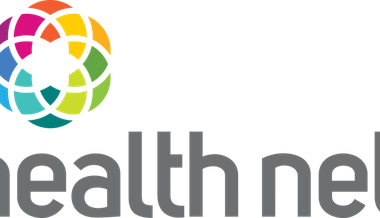INTRODUCTION
If you own a home, homeowners insurance is an essential part of being a responsible property owner. State Farm is one of the largest providers of homeowners insurance in the United States. However, deciphering exactly what is and isn’t covered by a State Farm policy can be confusing. In this in-depth guide, we will explore the main types of coverage provided by State Farm homeowners insurance and explain some less obvious details to help you make the most informed decisions about protecting your home and property.
Dwelling Coverage
Dwelling coverage is one of the main parts of any homeowners insurance policy. This portion of the policy protects you if your home is damaged or destroyed. State Farm offers coverage for the actual cash value or replacement cost of your home.
Actual Cash Value Coverage
Actual cash value coverage reimburses you for the depreciated value of your home and any structures on your property at the time of a covered loss. Depreciation accounts for normal wear and tear on your home over time. For example, if your home was worth $200,000 when new but was 10 years old at the time of a loss, and 10% depreciation is typical for a 10-year-old home, the actual cash value payout would be $180,000.
Replacement Cost Coverage
Replacement cost coverage pays the full cost to repair or rebuild your home without accounting for depreciation, up to the limits of your policy. So in the previous example, replacement cost coverage would pay out the full $200,000 cost to rebuild the home as new. This coverage generally costs slightly more in premiums but means you can fully repair or reconstruct your home following a covered loss. It’s worth the investment for most homeowners.
Other Structures Coverage
Other structures coverage protects structures separate from your home, such as garages, fences, swimming pools, and sheds. State Farm allows you to set a limit between 10-40% of your dwelling coverage limit for other structures. So if your home is insured for $200,000, you can choose to cover up to $80,000 worth of other structures.
Personal Property Coverage
Your personal property coverage protects your belongings inside your home. State Farm uses a simple calculation based on the square footage of your living space. They will insure 50-75% of your dwelling limit for personal belongings. For example, if you insure your $200,000 home with State Farm and select the maximum 75% personal property ratio:
- Dwelling limit: $200,000
- 75% of $200,000 is $150,000
- The personal property limit would be $150,000
Within this limit, you are covered for things like furniture, clothing, electronics, artwork, jewelry, and other valuables in your home. Certain high-value items may require scheduled endorsements to increase their sublimity. Personal property coverage also extends to belongings temporarily away from home, at a residence under construction, or in storage units.
Additional Living Expenses
If a covered loss makes your home uninhabitable, additional living expenses (ALE) coverage pays to temporarily relocate your family. State Farm provides coverage of up to 20% of your dwelling limit for ALE – so in our $200,000 home example, the max would be $40,000. ALE pays for costs like food, living space rental, storage, and laundry/housecleaning during renovations following a claim. This coverage is crucial to maintaining your lifestyle until repairs are done.
Medical Payments to Others
The medical payments to others coverage in a State Farm homeowners policy pays for medical bills if someone is injured at your home, even if you are not liable. The standard limit offered is $1,000 per person. So for example, if a guest trips on your front steps and breaks an arm, their $3,000 medical bill would be covered up to the $1,000 per person limit of your policy. This coverage provides peace of mind and goodwill towards others who may be injured while visiting.
Personal Liability Coverage
Personal liability coverage protects you or members of your household if someone is accidentally injured at your home or if your actions damage someone else’s property. If someone sues you, it pays damages, legal defense fees, and settlement costs. State Farm provides liability limits of at least $100,000 per occurrence. Umbrella liability policies can increase this for high-asset homeowners. Proper liability coverage limits are crucial to safeguard your finances from expensive litigation.
Property Damage From Certain Causes
Most losses are covered under the main parts of a State Farm policy already discussed. However, the following additional causes of loss merit explanation:
Fire: Fire damage to your home or belongings from uncontrolled fire is covered.
Lightning: Lightning strikes that spark fires or other damage are covered losses.
Windstorm or Hail: Winds strong enough to damage roofing or siding structures, along with damage from airborne hail and debris, are covered. Different deductibles may apply based on the area and severity of storms.
Explosion: Damage from an explosion on your property or in your home is covered.
Riot or Civil Commotion: Riot coverage protects damage done during civil unrest.
Aircraft or Vehicle: Accidental collision damage caused by planes, drones or vehicles qualifies. Intentional acts are excluded.
Vandalism and Malicious Mischief: Intentional or malicious damage to your home by others is covered. Theft or damage done by resident family members is excluded.
Falling Objects: Falling trees, tree limbs, ice, snow or sleet that crush structures are covered.
Weight of Ice, Snow or Sleet: Collapse damage to a roof specifically from the weight of ice, snow, or sleet is covered.
Accidental Discharge or Overflow of Water or Steam: Burst pipes, leaks, and accidental water damage from appliances are covered.
Sudden and Accidental Tearing Apart, Cracking, Burning or Bulging: Specific sudden mechanical breakdowns inside home systems and appliances are covered.
Freezing: Damage to plumbing, heating, or air systems caused by freezing temperatures is covered.
Theft: Loss of or damage to personal property from theft is covered if there is visible evidence of forced entry.
These are the main perils and causes of property loss covered under a standard State Farm Homeowners policy. Understanding the breadth of risks mitigated is important for weighing your protection needs.
Common Policy Exclusions
While the main goals of coverage are addressed, it’s also important to note some standard policy exclusions State Farm and other insurers apply:
- Flood damage (requires separate flood insurance policy)
- Earthquake damage (some states require earthquake policies)
- Seepage, leakage, or flooding from plumbing systems over some time
- Wear and tear, marring, deterioration, insects, and vermin
- Mechanically caused breakdowns like those from rust, corrosion, or defective materials and workmanship
- Power surge damage without visible burn marks
- Losses caused by your intentional or criminal acts
- Seizure by government authority
- Nuclear hazard or war-related losses
- Mold damage (requires additional endorsements)
Awareness of exclusions helps determine your true risk exposure and other insurance solutions that may be worth considering. Comprehensive coverage evaluation with an agent can uncover gaps.
Additional Homeowners Policy Options
While the core policy elements cover major risks, there are several valuable supplemental forms of coverage State Farm offers as options to further tailor protection:
Home Computer Coverage – Covers computer hardware, software, and data against a variety of perils for an additional premium. Provides up to $5,000 in protection.
Identity Fraud Expense Coverage – Reimburses expenses like costs of notifying creditors, legal defense fees, and lost income from stolen identity for up to $25,000.
Water Backup and Sump Overflow Coverage – Protects against property damage from water backing up through sewers or draining systems, or overflowing from a sump pump.
Ordinance or Law Coverage – Increases costs to rebuild and repair a home by current building codes and regulations.
Increased Limits on Valuables – Higher sub-limits for jewelry, furs, fine arts, silver, and other collectibles help ensure full replacement in case of damage or theft.
Guest Medical Protection – Increases standard medical payment coverage to higher per-person limits of up to $10,000.
Loss Assessment Coverage – For condo or cooperative unit owners, it pays your portion of assessments levied to repair common areas after losses.
Umbrella Liability Coverage – Provides higher excess liability protection, often $1 million or more, for serious injury claims exceeding primary limits.
Understanding all the options, and which make sense for your situation, helps create a balanced and robust homeowners coverage package through State Farm. An agent can best evaluate your needs and recommend the right supplemental protection.
Renewals, Discounts, and Policy Servicing
Before concluding, here are a few helpful tips regarding servicing your State Farm homeowners policy after initiation:
- Policies renew annually, so review coverages and limits yearly with your agent to ensure proper protection.
- Apply for all available discounts like bundling policies, new home discounts, alarm system discounts, and good student or homeowner discounts.
- Manage





